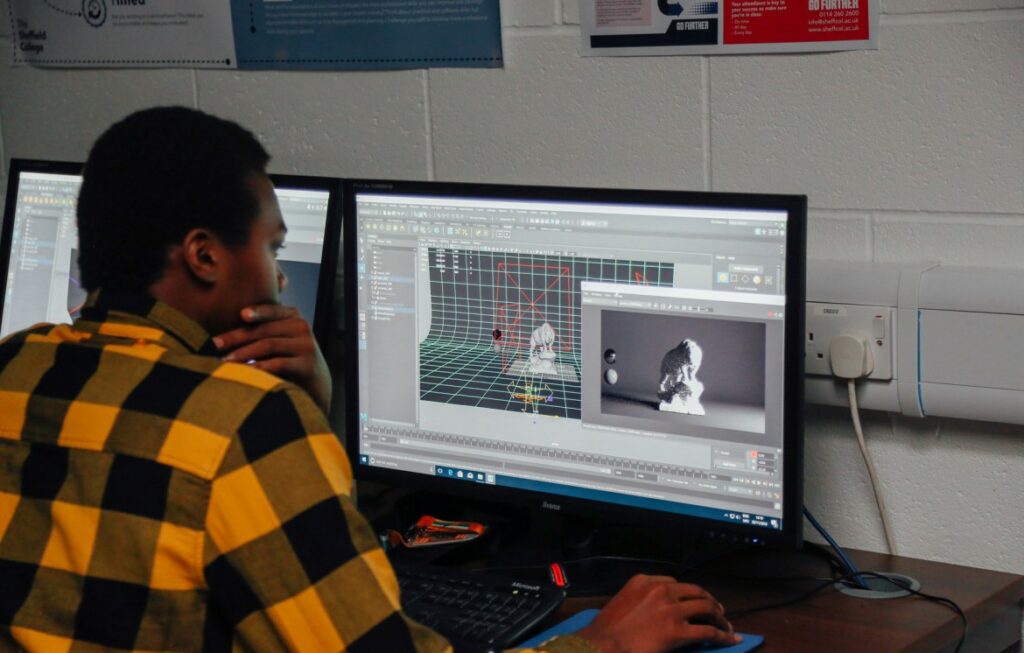The main purpose for developing a video game is to create an interactive experience that can be enjoyed by players. This requires teamwork among different professionals who have unique skillsets in their field. These include programmers, designers, artists, and many other disciplines. Each person has his/her own role during the development process. Below we will go over each job’s responsibilities so you’ll know how they contribute to your project.
Artists
An artist works on creating graphics and animations (2D & 3D) for characters in games. They also work closely with programmers to determine what kind of visuals should be created based upon gameplay mechanics. Artists typically use software like Photoshop to design 2D images while animators often utilize programs like Maya to build complex 3D scenes. Other duties may involve designing menus, character portraits, concept art, etc.
Animator
A key position within animation, the animator creates movements for digital characters using a program called motion capture. He/she then passes these files onto a programmer working with them. Animators must understand programming concepts well enough to convert movement data into a machine-readable format.
Composer
Developing music for a computer game involves composing tunes that fit certain themes assigned by developers. Composers usually come from musical backgrounds where most likely they’ve composed songs for movies, commercials, stage productions, and more. In some cases, composers might even perform live instruments when recording tracks. Their compositions help establish moods and theme settings for various types of content and genres. For instance, if you’re making a horror game, you need scary music but not necessarily one that sounds like Metallica! Your composer will make sure it fits your vision.
Environment Artist
An environment artist uses computerized tools to visualize worlds and locations. His/her primary duty is to ensure that environments look realistic. To do this, he/she needs to study maps and buildings and draw rough sketches before building actual 3D objects. Also, some environmental artists take real photos of places and elements, which helps improve textures later on.
Level Designer

As mentioned above, the level designer is responsible for setting up levels and ensuring that all major parts fit together properly. Level designers normally sketch out general layouts first and pass them off to programmers who translate those designs into executable code. At times, they may collaborate with others in order to get ideas implemented correctly. Some people prefer getting involved at this point because they want to see how things turn out right away; whereas others wait until everything is completed and tested before putting in feedback. It all depends on whether you consider yourself a perfectionist or a risk-taker.
Modeler
A modeler renders polygons and meshes to produce detailed 3D shapes. Most commonly used today, polygonal modeling uses triangular faces to represent surfaces. Modelers typically take 2D illustrations and manipulate them manually into 3D forms. However, there are programs that automate this process instead of requiring manual labor. There are several ways to achieve quality results through modeling, including subdivision surface rendering, constructive solid geometry, and NURBS (nonuniform rational Bézier curves). Once again, programmers can assist modelers via scripting functions to speed up the processing time.
Rigging Technician

One way to think about rigging is to imagine a tree branch hanging down from a tree trunk. Rigging refers to the process of attaching multiple joints between two nodes (the ends of branches). If you’d like to animate something moving around, it would require thousands of individual trees and limbs. With traditional techniques, riggers would paint every single joint and tie it directly to bones. Today, however, computers automatically calculate weights and positions based on mathematical formulas. This is known as inverse kinematics. Programmers can aid riggers by writing scripts that handle calculations for them.
Script Writer
If you plan to sell your finished product commercially, chances are someone else will eventually write the script(s) that control the characters’ moves and behavior. Scriptwriters create coding languages that tell computers how to function. While programmers themselves don’t always write scripts, they certainly edit existing ones written by others. Scriptwriters rely heavily on programming knowledge since they have to combine logic with syntax. As long as the language follows basic rules, programmers won’t complain too much. One common mistake here is mixing keywords with variables. That said, there’s no hard rule against doing this; just keep track of it. Another type of scriptwriter writes documentation for users to reference.
Sound Effects Editor
It takes dozens of hours to record audio clips for a whole game. Before hiring voice actors, you’ll need to choose specific phrases to put under distinct categories. You could call this “categorization” or “tagging.” Next comes editing — cutting unwanted moments out and combining similar recordings. Finally, you’ll mix voices together to form a cohesive soundtrack. Sometimes background noises might play along with recorded dialogue. Or perhaps ambient noise plays after the credits roll. All of these tasks happen in postproduction and need dedicated editors. Depending on your budget, you can hire professional editors or assistants.
Testers
Once everything is done, testers try to find bugs and errors in a piece of media. They might report problems found by playing the entire thing or only part of it. Testers can either test commercial products or projects developed internally. Generally, testing teams are comprised of members from different departments. For example, a QA engineer (quality assurance) tests final builds to verify functionality. Meanwhile, UI (user interface) specialists examine user interactions to check if buttons, menus, text boxes, etc., are easy to navigate. And sometimes artists might participate in testing sessions to make sure that their creations look good.
These are merely a few examples of typical jobs associated with game development. Now that you’re familiar with the basics, feel free to explore further and learn more about becoming a game developer.

